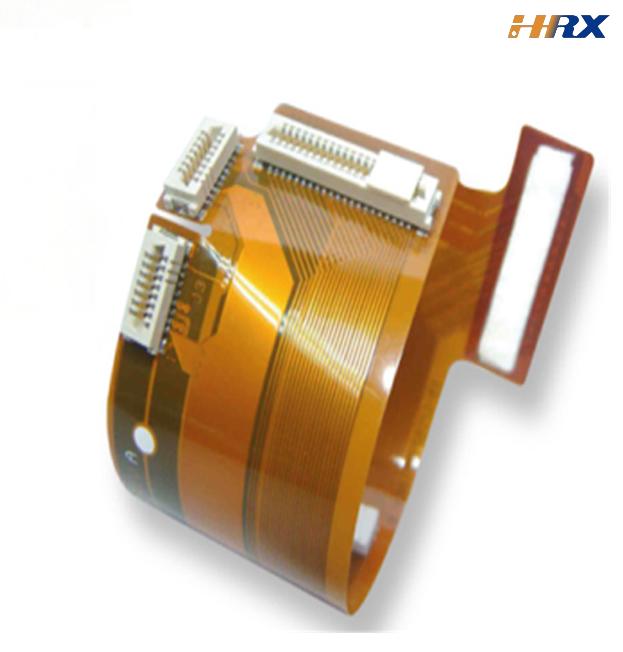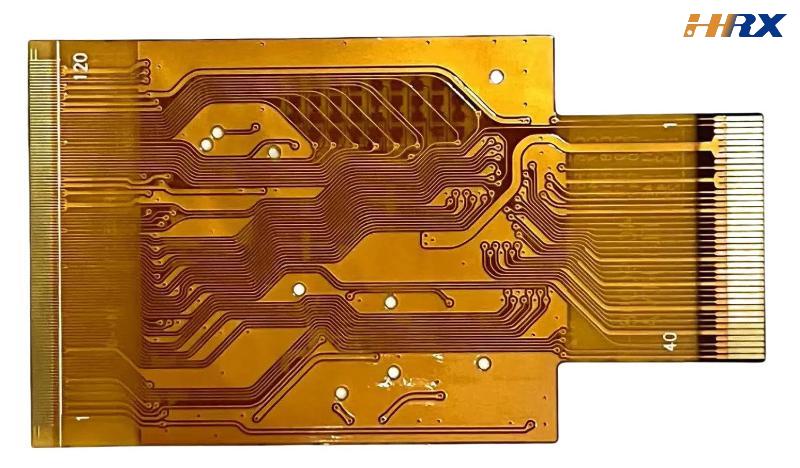Search
Key Considerations for Attaching Connectors to FPC Flexible Circuit Boards
- May 06,2025
-
Share
In the highly specialized domain of advanced electronics manufacturing, the process of affixing connectors to Flexible Printed Circuit Boards (FPCs) represents a critical juncture that demands unwavering precision and meticulous attention to detail. As a preeminent global ODM/OEM manufacturer with a profound expertise in the design, development, and large - scale production of FPCs, PCBs, and Rigid - Flex Printed Boards, Shenzhen Huaruixin Electronics Co., Ltd. is acutely aware of the intricate nuances inherent in this operation.

1. Environmental Control: A Prerequisite for Precision
The operational environment serves as a linchpin in the connector attachment process for FPCs. Given the delicate nature of FPCs, which are highly susceptible to the detrimental effects of dust particles, ambient moisture, and electrostatic discharge (ESD), it is imperative to execute this operation within a controlled environment, preferably a Class 1000 cleanroom. Such an environment ensures minimal particulate contamination and maintains optimal humidity levels, typically between 30 - 50% RH, to prevent moisture - induced degradation.
ESD protection is of paramount importance, as even a minor static discharge can cause irreversible damage to the sensitive electronic components on the FPC, leading to signal integrity issues, functionality failures, or even catastrophic system malfunctions. To mitigate these risks, comprehensive ESD control measures should be implemented, including the use of ESD - compliant work surfaces, anti - static wrist straps, ionizing blowers, and grounded equipment.
2. Precision Tools and Equipment: The Backbone of Accuracy
The utilization of high - precision tools and state - of - the - art equipment is non - negotiable for achieving consistent and accurate connector placement on FPCs. Automated pick - and - place machines equipped with advanced vision systems are the industry standard for handling the minuscule and intricate components involved. These machines can achieve placement accuracies within ±50μm, ensuring that the connectors are positioned with utmost precision, thereby minimizing the risk of misalignment, which can lead to electrical contact failures and mechanical stress concentrations.
In the realm of soldering, precision soldering stations with closed - loop temperature control systems are essential. The choice of soldering technology, whether it be reflow soldering, hot - air soldering, or selective soldering, depends on the specific requirements of the FPC - connector assembly. For example, reflow soldering is often preferred for high - volume production of surface - mount connectors on FPCs due to its ability to provide uniform heat distribution and consistent solder joint formation.
3. Connector Selection and Compatibility: A Critical Decision - Making Process
The selection of the appropriate connector is a multifaceted decision that requires a thorough understanding of the FPC’s electrical, mechanical, and environmental specifications. Key parameters to consider include pitch tolerance, contact resistance, current - carrying capacity, and mechanical durability. The connector’s pitch, which refers to the distance between adjacent contact points, must be precisely matched to the FPC’s pad layout to ensure proper electrical connection. A mismatch in pitch can result in open circuits, short circuits, or intermittent connectivity issues.
For high - speed data transmission applications, connectors with low insertion loss and excellent impedance matching characteristics are essential to maintain signal integrity. Additionally, the mechanical design of the connector, such as its locking mechanism and mating force requirements, must be compatible with the FPC’s flexibility and durability. Our team of experienced engineers at Shenzhen Huaruixin Electronics Co., Ltd. leverages in - depth knowledge of industry - standard connectors, such as ZIF (Zero Insertion Force) and FFC (Flat Flexible Cable) connectors, to provide customized solutions that meet the most stringent requirements.
4. Surface Preparation: Laying the Foundation for Reliable Bonding
Proper surface preparation of the FPC is a crucial step that significantly impacts the quality and reliability of the connector attachment. The bonding pads on the FPC must be meticulously cleaned to remove any contaminants, including oxidation layers, flux residues, and organic impurities. Plasma treatment, a widely adopted surface - activation technique, is highly effective in improving the wettability of the pad surface, enhancing the adhesion of solder or adhesive materials.
In cases where anisotropic conductive film (ACF) is used for connector bonding, the surface roughness and cleanliness of the FPC are of utmost importance to ensure uniform electrical conductivity and mechanical strength. Chemical cleaning agents, such as isopropyl alcohol (IPA) or specialized PCB cleaners, can be employed in combination with ultrasonic cleaning to achieve a pristine surface.
5. Soldering and Bonding Techniques: Mastering the Art of Connection
The choice of soldering and bonding techniques is a critical factor that determines the performance and reliability of the FPC - connector assembly. Reflow soldering, a popular mass - soldering technique, involves heating the FPC - connector assembly in a controlled reflow oven, where the solder paste melts and wets the contact surfaces, forming a strong metallurgical bond. This technique is particularly suitable for complex FPC assemblies with multiple connectors and fine - pitch components.
For applications requiring localized soldering or repair work, hot - air soldering can be a viable alternative. In addition to soldering, adhesive bonding techniques, such as the use of epoxy - based adhesives or conductive adhesives, are often employed to enhance the mechanical stability of the connector attachment, especially in applications subject to vibration or dynamic loads. However, careful consideration must be given to the adhesive’s curing characteristics, viscosity, and compatibility with the FPC materials.
6. Quality Control and Inspection: Ensuring Uncompromising Reliability
A comprehensive quality control and inspection regime is indispensable for guaranteeing the reliability of FPCs with attached connectors. Non - destructive testing methods, such as X - ray inspection and automated optical inspection (AOI), play a crucial role in detecting hidden defects, such as voids in solder joints, misaligned components, or solder bridging. X - ray inspection provides a detailed view of the internal structure of the solder joints, enabling the identification of potential reliability issues that may not be visible through visual inspection.
Electrical testing, including continuity testing, insulation resistance testing, and high - frequency signal testing, is essential to verify the functionality of the FPC - connector assembly. At Shenzhen Huaruixin Electronics Co., Ltd., we implement a multi - stage quality control process, from incoming material inspection to final product testing, to ensure that every FPC meets or exceeds the highest industry standards.
In conclusion, the process of attaching connectors to FPCs is a complex and technically demanding operation that requires a harmonious integration of technical expertise, cutting - edge equipment, and stringent quality control measures. As a leading global manufacturer in the field of FPC, PCB, and Rigid - Flex Printed Board production, Shenzhen Huaruixin Electronics Co., Ltd. is well - positioned to provide comprehensive solutions for all your FPC - connector attachment needs. Whether you require custom - designed FPCs with precision - attached connectors or seek to optimize your existing manufacturing processes, our team of experts is ready to assist. Visit our website at www.hrxfpc.com to explore our extensive range of products and services, or contact us via email at sales@hrxfpc.com. We invite industry professionals, partners, and customers to engage in technical exchanges and collaborative projects, as we are committed to driving innovation and excellence in the electronics manufacturing industry.

Let’s talk! We’ll provide the perfect solution for you!
-
 Huaruixin Electronics mainly produces printed circuit boards as the core business, to provide customers with one-stop solutions for FPC/PCB production, components sourcing and Assembly.
Huaruixin Electronics mainly produces printed circuit boards as the core business, to provide customers with one-stop solutions for FPC/PCB production, components sourcing and Assembly. - WHAT WE DO — PCB Design Solutions — Flex PCB Production — Components Sourcing — FPC&PCB Assembly
- PRODUCTS — Single Sided Flexible Circuits — Double Sided Flexible Circuits — Multilayer Flexible Cirucits — Rigid-Flex Circuits — FPC Assembly — PCB Assembly
- CAPABILITY — FPC Capability — Rigid-Flex Capability — PCB Capability — Assembly Capability
- Copyright © 2024 Shenzhen Huaruixin Electronics Co., Ltd. All Rights Reserved.
- Design By BONTOP


